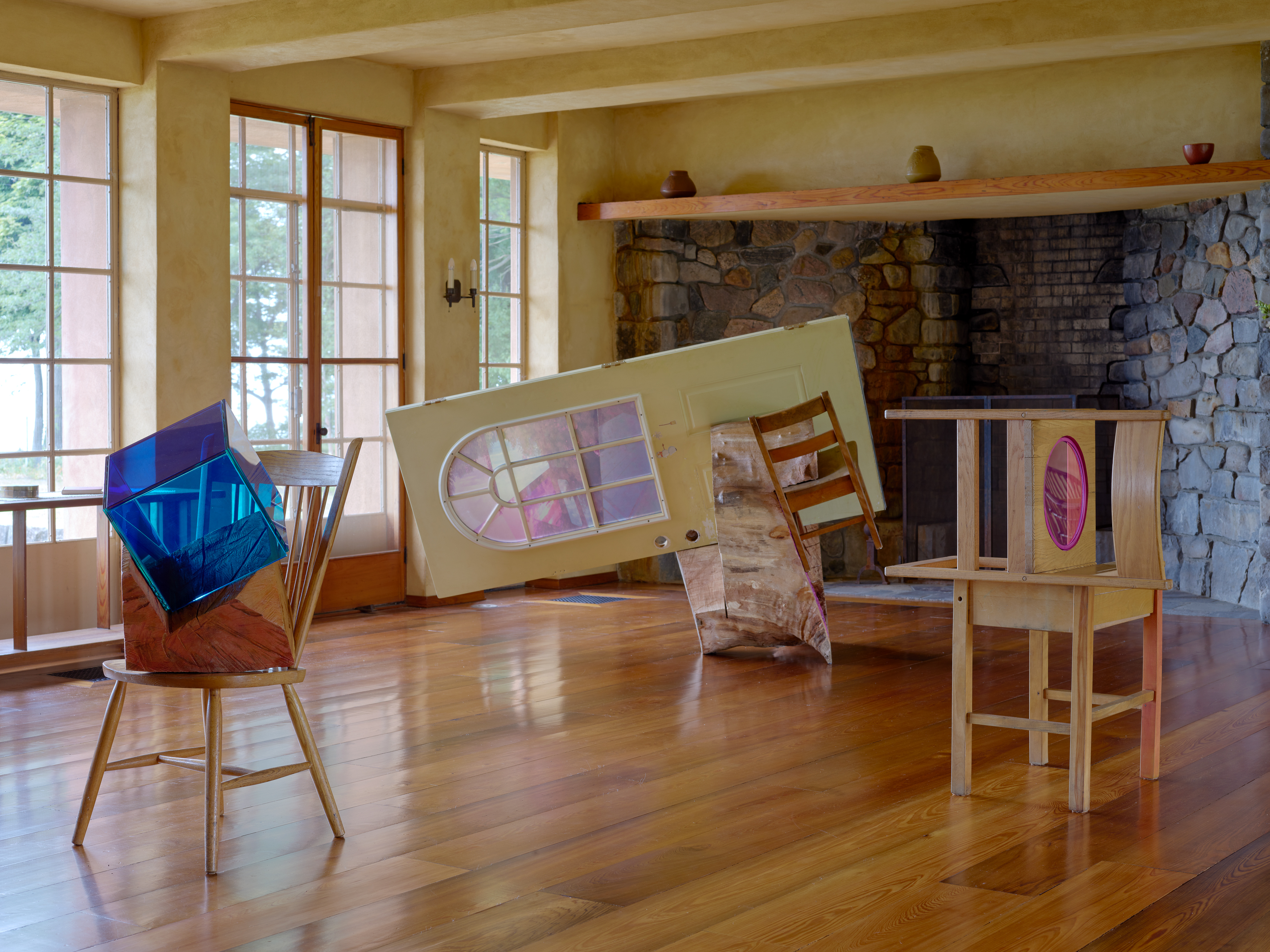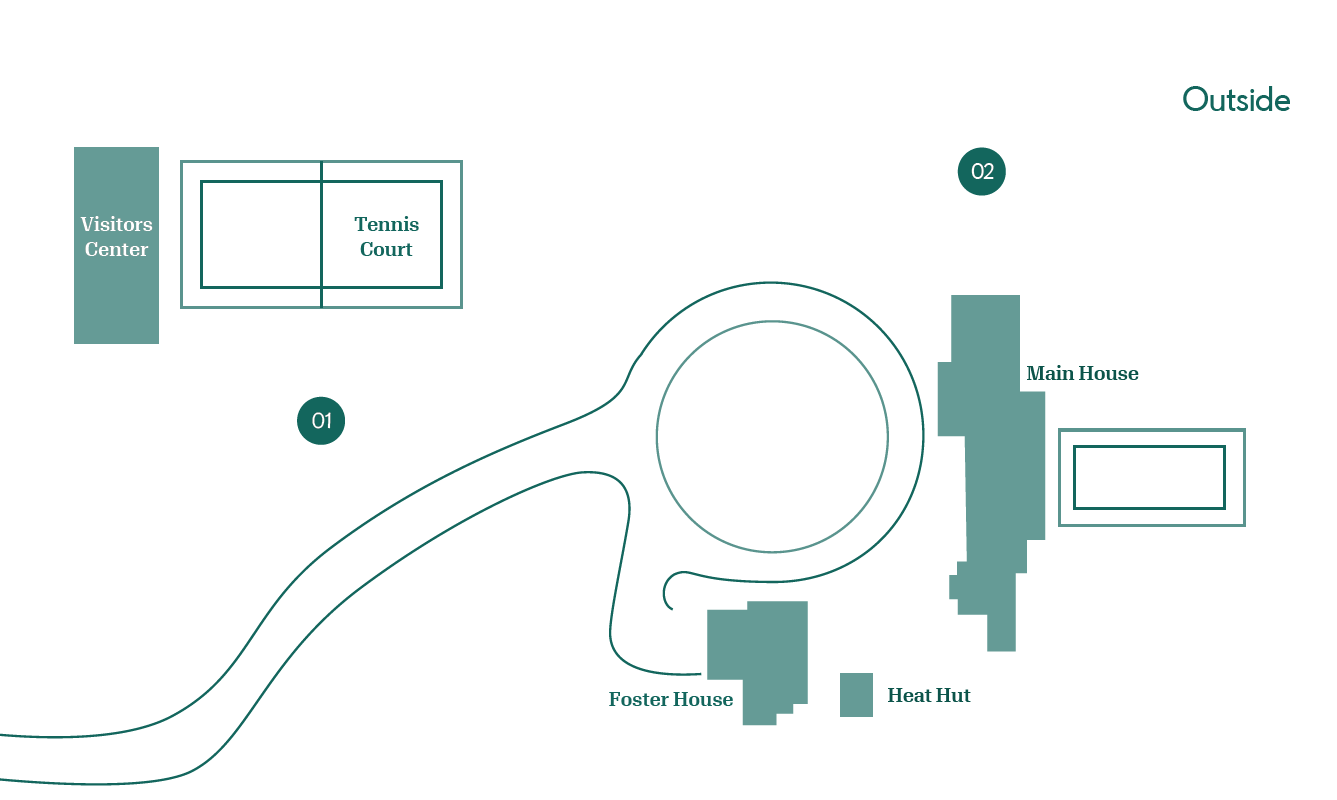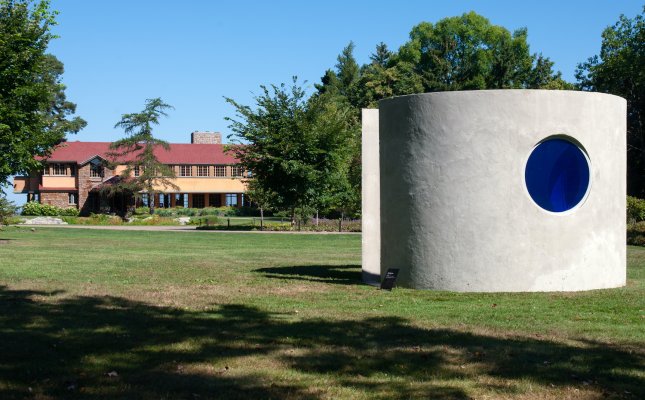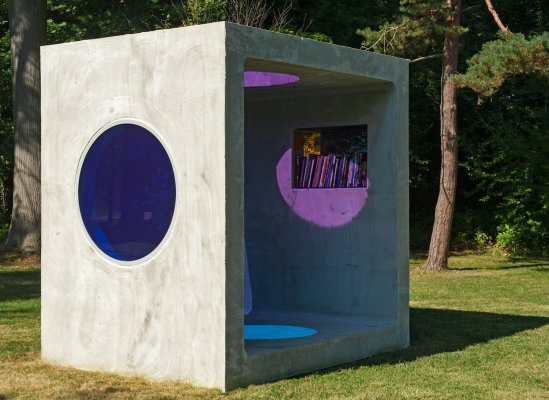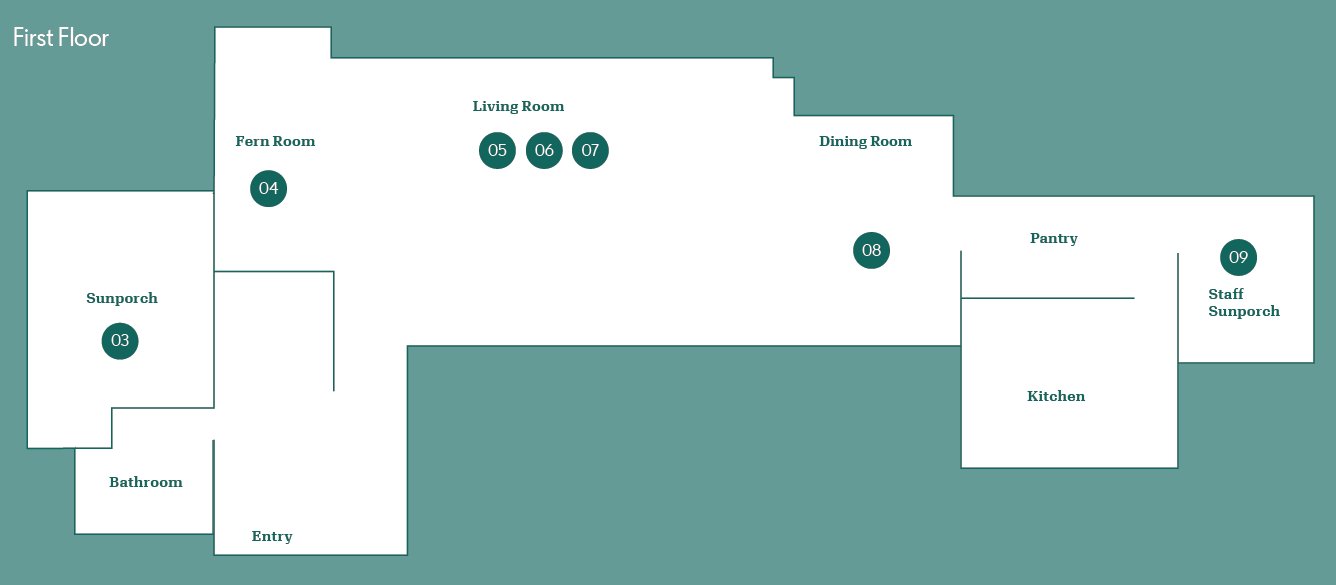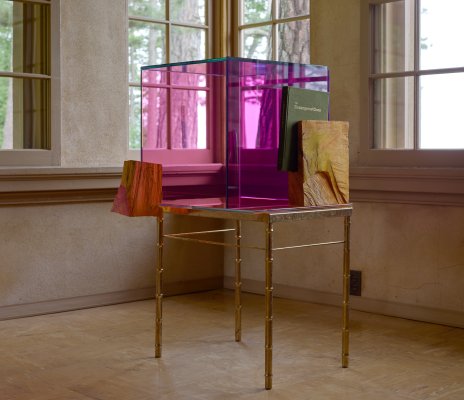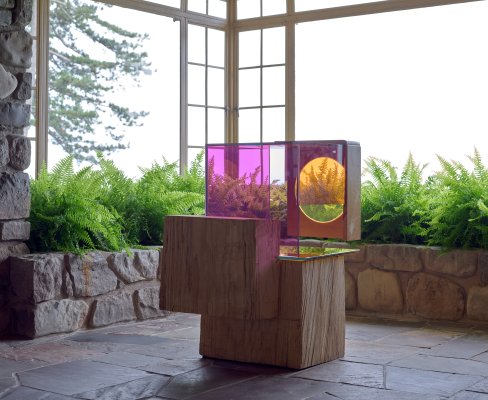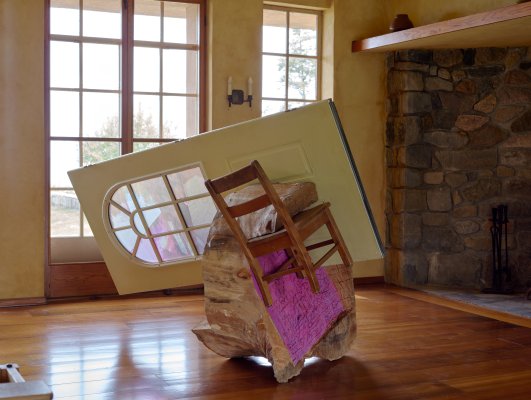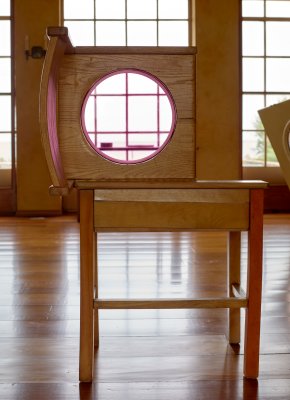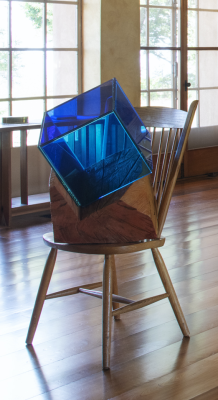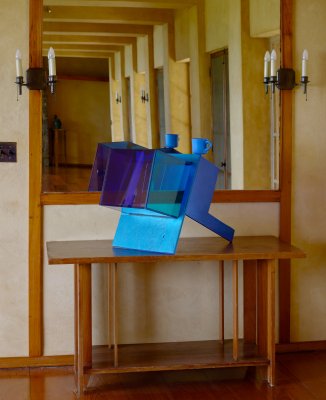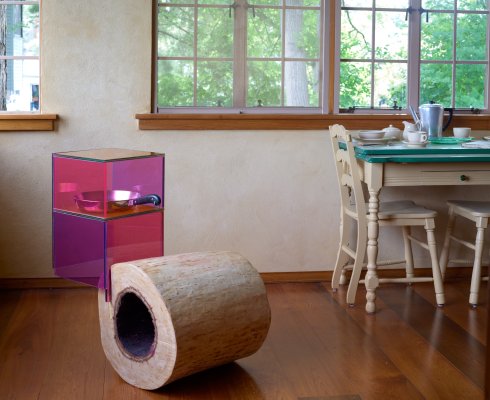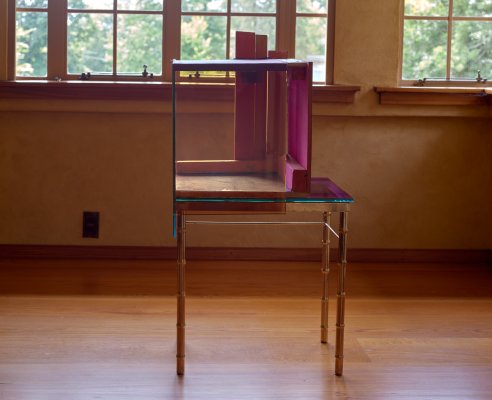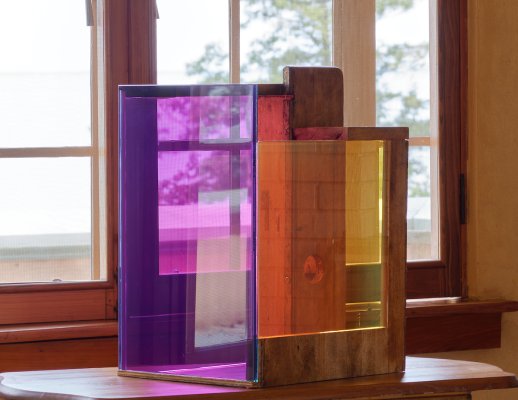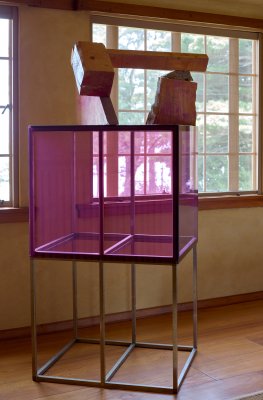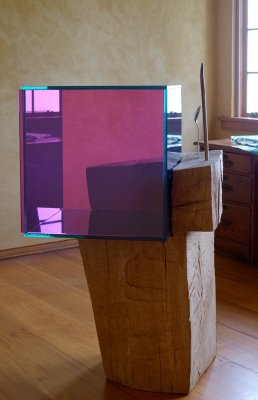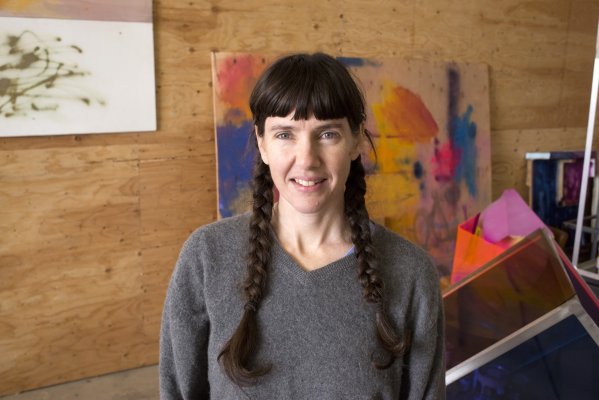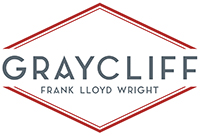In Finding Room, Sarah Braman encourages us to think about the ways in which function, history, aesthetics, and spirituality continually shape our immediate environment. Brought meaningfully to the forefront of our minds when we encounter Braman’s sculptures on the Graycliff grounds, we are unable, at least momentarily, to remain indifferent to these spaces.
Braman makes domestically-scaled indoor and monumental outdoor sculptures that celebrate everyday life. In her indoor practice, she combines found objects like furniture, doors, and pieces of scrapyard vehicles with colorful geometric volumes. Composed by similar means, her outdoor sculptures made from concrete culverts that lie beneath our roads and buildings, are enlivened by the addition of colored glass. This exhibition is the very first time that viewers can experience Braman’s indoor and outdoor sculptures together, and it is the first opportunity for these practices to speak to one another.
In the sunporch on the first floor of Graycliff, while standing beside Reading, 2020, viewers can look through the window to see the concrete sculpture Stay, 2022. Each sculpture features books selected by the artist to invite prolonged engagement. The cube of colored glass in Reading has an airy, voluminous quality that almost floats, in contrast to Stay’s heavy, opaque walls. The weight and groundedness of Stay, nestled as it is on the grass and among the trees, suggests it has been in this location long before any of us came along. One might imagine it to be a found object, like the cookery and furniture included in Braman’s other artworks, her intervention the enlivening addition of colored glass and books as she works with the environment. In this, she shares much with architect Frank Lloyd Wright (American, 1867–1959).
